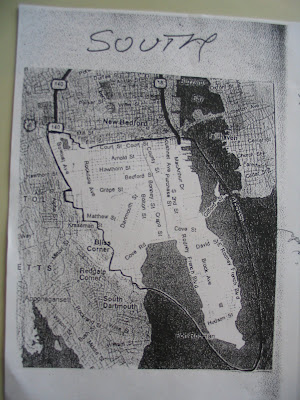
I came to a community of Sacred Hearts religious that was very familiar to me. Just two years ago, I was serving there, together with two brother priests and three sisters from our Congregation of the Sacred Hearts. What a great reunion it was to be again with these special people that I so love. With me on the trip was Fr. Benedict Folger SSCC, who also was there. Serving with verve, praying with fervor, beloved by the people, he would never have left, if it were not for health problems. So I rejoiced to see him again in this place where his spirit fit so well.

Fr. Benedict Folger SSCC
This community in Artesia is distinctive, in that it is called a C.I.M., a Community in Mission, meaning that it aims at the renewal of our religious and communal life with a spark of our original spirit, given to us by our two founders: Fr. Pierre Coudrin SSCC and Sr. Henriette Aymer SSCC, who began our religious life by taking their vows of poverty, chastity, and obedience in 1800.

Fr. Pierre Coudrin SSCC- the "Good Father"

Sr. Henriette Aymer SSCC- the "Good Mother"
Because of them, whom we call our “Good Father” and our “Good Mother”, we are a true family, and that family spirit is part of our mission to renew ourselves and the world through God’s Love.
Each person in that community had and still has a unique and priceless function. For example, Sr. Damien Dang SSCC is part of the St. Jose ministry that serves food to bereaved families after funerals.

Sr. Damien Dang SSCC (with green apron)
Sr. Marie Lemert SSCC serves as an advocate for the protection of children. See the picture of Marie showing off her fifty cent jacket. Go Marie! Get those bargains!

Sr. Marie Lemert SSCC
And Fr. Paul Murtagh SSCC, is the softspoken, but ever caring servant-leader of five diverse communities.

Fr. Paul Murtagh SSCC

St. Catherine's Church in Hageman, N.M.
Pardon me for not showing photos of Sr. Dominic Reantaso SSCC and Fr. Brian Guerrini SSCC., who are equally special. I just didn't get around to photographing them!
I felt a deep connection once more with our people as I celebrated masses in all five churches.


And though it hurt to tell them I was visiting, not staying, we shared tremendous joy in seeing each other again.


In a mission like this, one learns to treasure the small things that others may not notice, like the sign at the entrance to Artesia that reminds one of the “scent of success.”

Do you think that sign shows the wrong end of the cow?
The nearby oil refiner, though ugly and a bit scary when its refuse flames surge like the fires of hell, it is a beautiful sight at sunrise and at night, when its lights twinkle and serve as a lighthouse in the pitch-black darkness.

refinery with refuse flame

refinery at sunrise

refinery at night
One shouldn’t forget that this refinery’s activity provides hundreds of jobs and produces the fuel that powers our airplanes. It reminds me of the refinery of spirit that is our religious life when we show our "light." at special times. If only more could see and know how beautiful this life is!
And yet this life must always change. Just eleven short days after arriving, we had to leave, but it was all right, knowing that we would be remembered and loved, and, of course, we would do the same. In that way, we are trying to be Christ’s missionaries, coming when we are needed, though not always wanted, and leaving when we are not needed as much, though perhaps still wanted . We come and go with Jesus, and that’s all right! Don’t you want to travel with us?











